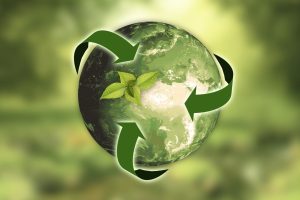What are the primary goals of sustainability
What are the primary goals of sustainability? The United Nations adopted the Sustainable Development Goals (SDGs), also known as the Global Goals, in 2015 as a global call to action to end poverty, protect the environment, and ensure that all people will live in peace and prosperity by 2030.

The Sustainable Development Goals (SDGs) recognize that there must be a balance between social, economic, and environmental sustainability in development and that actions in one area will have an impact on outcomes in other areas. They are therefore integrated.
Countries have agreed to give priority to those who are behind in progress. The SDGs aim to end discrimination against women and girls, hunger, AIDS, and poverty.
In order to achieve the SDGs in any setting, society as a whole must contribute its inventiveness, expertise, technology, and financial resources.
Except for goals 8 and 9, all of the goals that have been consolidated here should be accomplished by 2030. That is certain to be the case:
- In an equitable manner, all children, regardless of gender, can attend primary and secondary schools for free.
- High-quality early childhood education and care are available to all children to help them prepare for primary school.
- There is equal access for men and women to low-cost, high-quality technical, vocational, and university education.
- A greater number of young people and adults acquire relevant skills, such as technical and vocational skills, in order to find work, obtain decent jobs, and start their own businesses.
- Children who are indigenous, female, have a disability, are in a crisis or have access to education and vocational training are not denied.
- Literacy and numeracy skills are present in all children and a significant number of adults.
- All students become global citizens who value cultural diversity and have the knowledge and skills to advocate for human rights, gender equality, sustainable development, and a culture of nonviolence and peace.
- Education facilities are constructed and upgraded up until and including the year 2030 to ensure that they are safe, nonviolent, and inclusive learning environments for all children, including girls and children with disabilities.
- Numerous additional scholarships will be available by 2020 to assist individuals from developing nations in pursuing higher education and vocational training abroad.
- International cooperation for teacher training in developing nations supports a significant increase in the number of qualified teachers.

The participating nations worked on the SDGs for more than a decade. The eight Millennium Development Goals (MDGs), which were set in 2000 and ended in 2015, basically carry on from the SDGs. More girls were able to attend school and nearly one billion people were freed from extreme poverty as a result of the MDGs.
By virtually eliminating global consumption of ozone-depleting substances, the MDGs, particularly goal seven, contributed to environmental protection; putting in trees to make up for the lost forest; and increasing the proportion of global coastal marine areas to total land.
The SDGs continue the momentum that the MDGs started with an ambitious development plan for the years after 2015 that could cost more than $4 trillion per year. The Rio+20 Earth Summit’s request for an open working group to draft an agenda for 2015 and beyond led to the creation of the Sustainable Development Goals (SDGs).
The Sustainable Development Goals (SDGs) also rely on private business contributions to change impractical and unsustainable consumption and production patterns, in contrast to the Millennium Development Goals (MDGs), which only received funding from governments and non-profit organizations.
One company that has aligned its objectives with the SDGs is Novozymes, which is said to be the world leader in biological solutions. Novozymes places a high priority on the development of technology that reduces the amount of water required for waste treatment. However, in order for the United Nations to achieve its objectives, additional businesses must step up and find additional means of meaningfully engaging the private sector.
The SDGs as a whole have seen little progress. One area in which the MDGs and SDGs have made progress, according to the United Nations, is the fact that many people now live healthier lives than they did at the turn of the millennium. For instance, trained medical professionals were involved in 80% of live births worldwide from 2012 to 2017, up from 62% between 2000 and 2005, as reported by the United Nations.
Participants in meetings on sustainable development claimed, despite some progress, that the SDGs are not being completed at the speed or with the necessary momentum to meet the 2030 deadline. There have been only modest improvements to some measures of poverty: According to the 2018 SDGs Report, less than 1% of workers worldwide who live with family earned less than $1.90 per day in 2017. The recent rise in global hunger is another issue. Malnutrition affected over 800 million people worldwide in 2016, up from 777 million in 2015, according to the 2018 SDGs Report.






